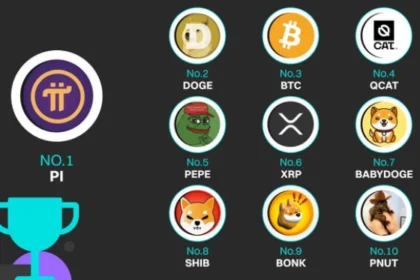The Pi Network’s native token, PI, has sparked substantial interest as it circulates in the form of an IOU (I Owe You), representing a token that exists in anticipation of a mainnet launch. Although these IOUs currently hold no direct real-world value, they have become a topic of speculation among crypto enthusiasts, raising a thought-provoking question: Is Pi Network Token’s IOU more valuable than Polygon (MATIC) on exchanges? Let’s explore the key factors shaping this debate.
Understanding the PI IOU Concept
The Pi Network has garnered millions of users by promoting an accessible mining process that does not require high computing power, allowing individuals to mine PI tokens on mobile devices. However, at this stage, PI tokens are only available as IOUs. An IOU token is a placeholder indicating a promise of future value once the network reaches mainnet launch, meaning PI tokens do not yet represent a tangible asset on the blockchain. In contrast, tokens like MATIC already hold an established place in the crypto ecosystem.
This IOU arrangement presents both opportunities and challenges for Pi Network’s growth. On one hand, the IOU allows investors and speculators to trade on the potential of PI tokens, despite the token’s lack of liquidity or interoperability on the broader blockchain. However, this system also means that PI’s valuation is hypothetical, driven purely by anticipation of future developments, which introduces a considerable level of uncertainty.
Polygon (MATIC): An Established Alternative
Unlike PI’s speculative status, Polygon’s native token, MATIC, is firmly established within the blockchain ecosystem. MATIC powers the Polygon network, which is a layer-2 scaling solution for Ethereum that aims to improve transaction speed and reduce costs. Polygon has already proven its utility with strong use cases, partnerships with large companies, and integrations within decentralized finance (DeFi), NFTs, and various decentralized applications (dApps). Consequently, MATIC’s value is largely grounded in actual usage and adoption, making it a more traditional and established asset in the market.
Factors Shaping PI vs. MATIC Valuation
1. Speculation vs. Utility: The valuation of PI IOUs is entirely speculative, driven by anticipation of Pi Network’s mainnet and its potential applications. By contrast, MATIC’s value is tied to real-world use cases and partnerships. This distinction reflects different risk profiles: MATIC appeals to those seeking established projects, while PI attracts those with a high risk tolerance for speculative assets.
2. Market Sentiment and Speculative Demand: In the crypto world, speculation and hype can often drive prices in the short term, regardless of a token’s utility. The growing popularity of Pi Network and its large user base could lead to heightened speculative interest, especially among those who believe in its future success. As a result, some may perceive PI’s IOU as having greater growth potential than MATIC’s relatively stable valuation.
3. Supply and Circulation: The limited availability of PI IOUs can create artificial scarcity, potentially increasing their speculative value. MATIC, however, has a defined supply and circulation pattern, providing stability and predictability for investors.
4. Regulatory and Security Concerns: IOU trading is often accompanied by questions of regulatory oversight and potential risks, as these tokens do not represent real, tradable assets. Pi Network may face challenges in ensuring compliance and security when it finally launches its mainnet. Polygon, as an established project, has already addressed many of these regulatory and security challenges.
Which Is More Valuable?
Determining which token is “more valuable” ultimately depends on perspective and investment goals. For those interested in security and tangible applications, MATIC provides a well-established ecosystem and proven real-world utility. On the other hand, PI’s IOU may attract investors and speculators willing to take on high-risk, high-reward ventures in hopes that Pi Network’s mainnet launch will result in substantial future value.
The Path Forward for Pi Network
If Pi Network successfully launches its mainnet and meets community expectations, PI tokens could achieve tangible value, potentially even rivaling established tokens like MATIC. The community’s enthusiasm for PI indicates a substantial base of supporters and early adopters who are optimistic about Pi Network’s potential. However, until the mainnet launch, these IOUs remain purely speculative, lacking the foundational utility and reliability that MATIC currently provides.
The comparison between Pi Network’s IOU and Polygon’s MATIC highlights a fundamental divide in the crypto market between speculation and tangible application. While PI’s IOU offers speculative allure, MATIC’s proven track record makes it the more stable choice for those seeking utility-backed investments. As Pi Network progresses towards mainnet, this speculative excitement will either materialize into genuine value or dissipate. Until then, PI remains a bet on the future—a bold venture that appeals to high-risk investors with a vision of Pi Network’s long-term potential. Read More
















